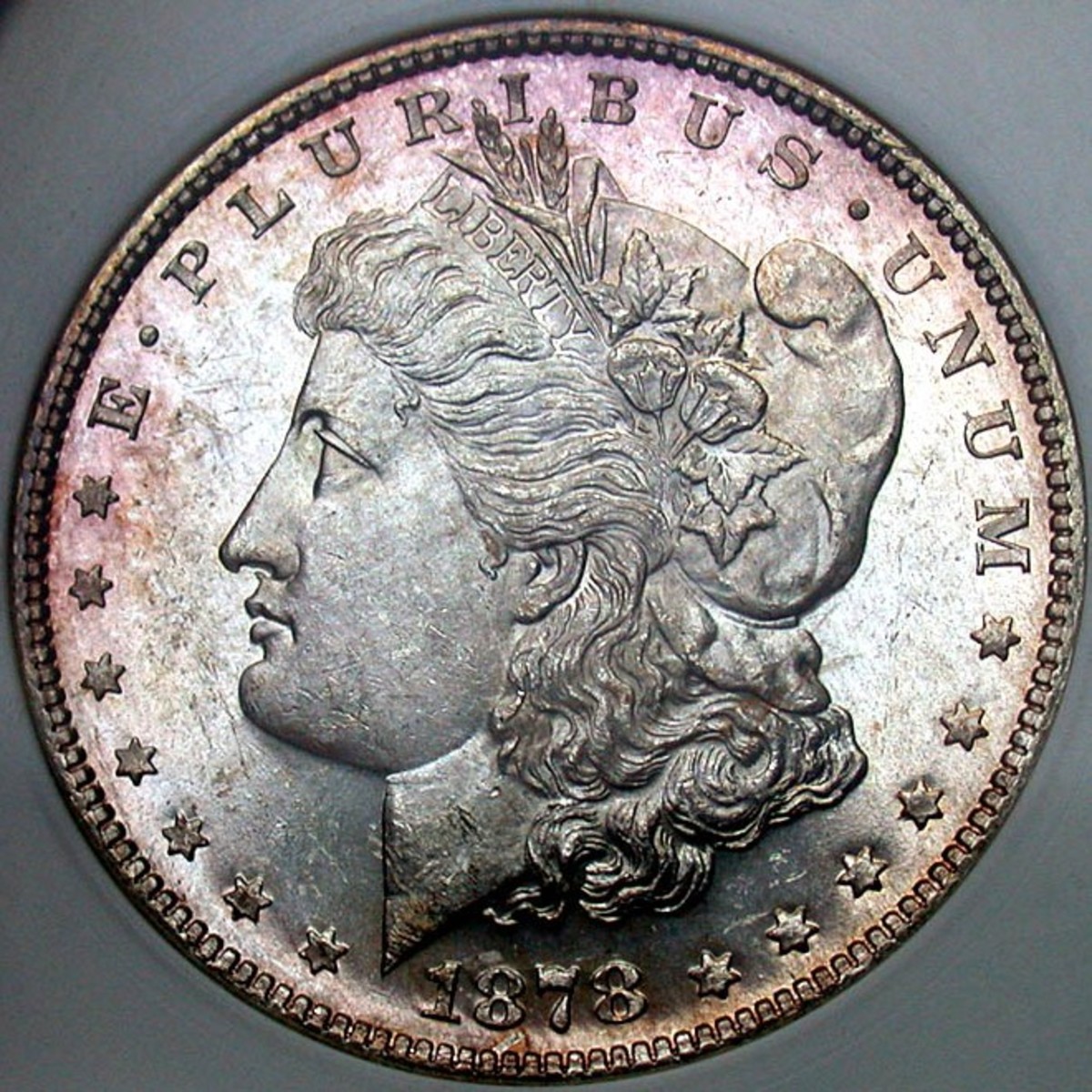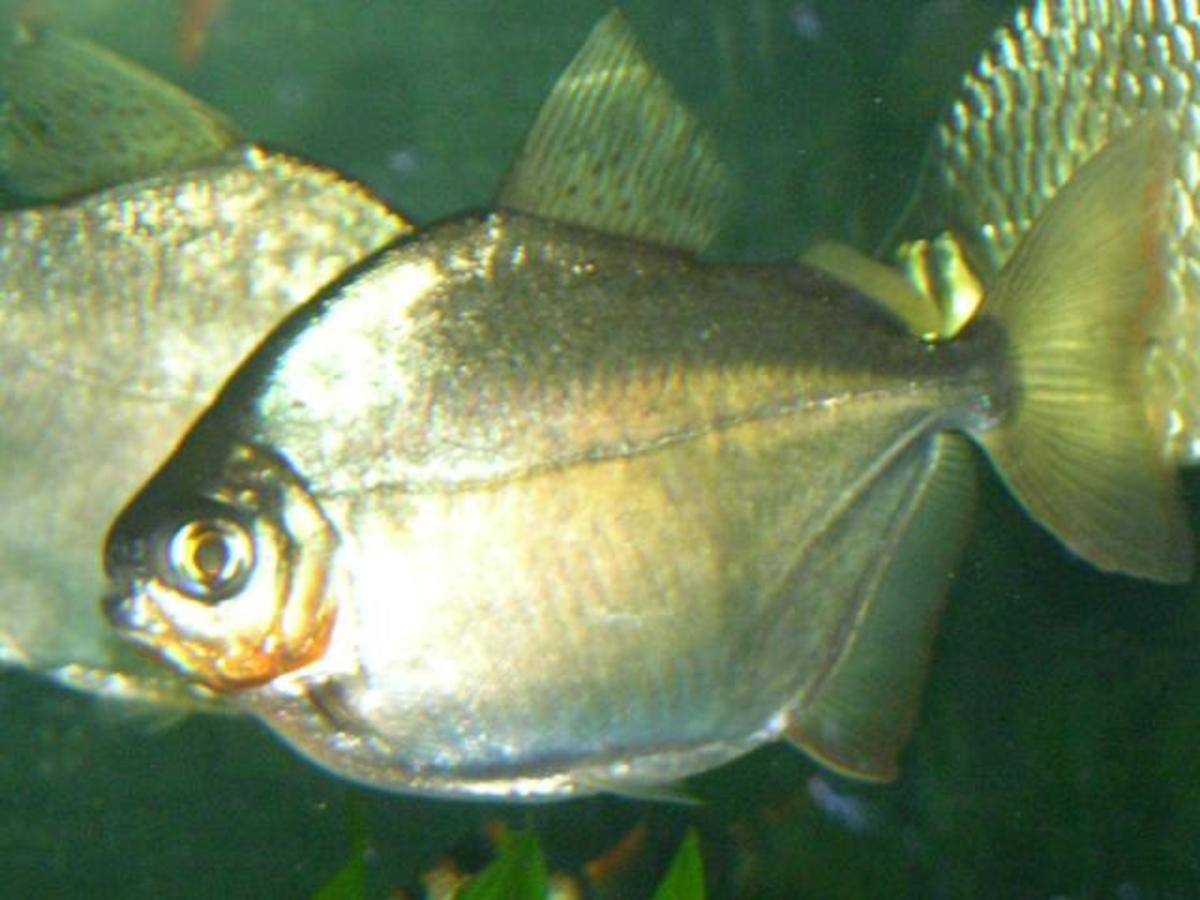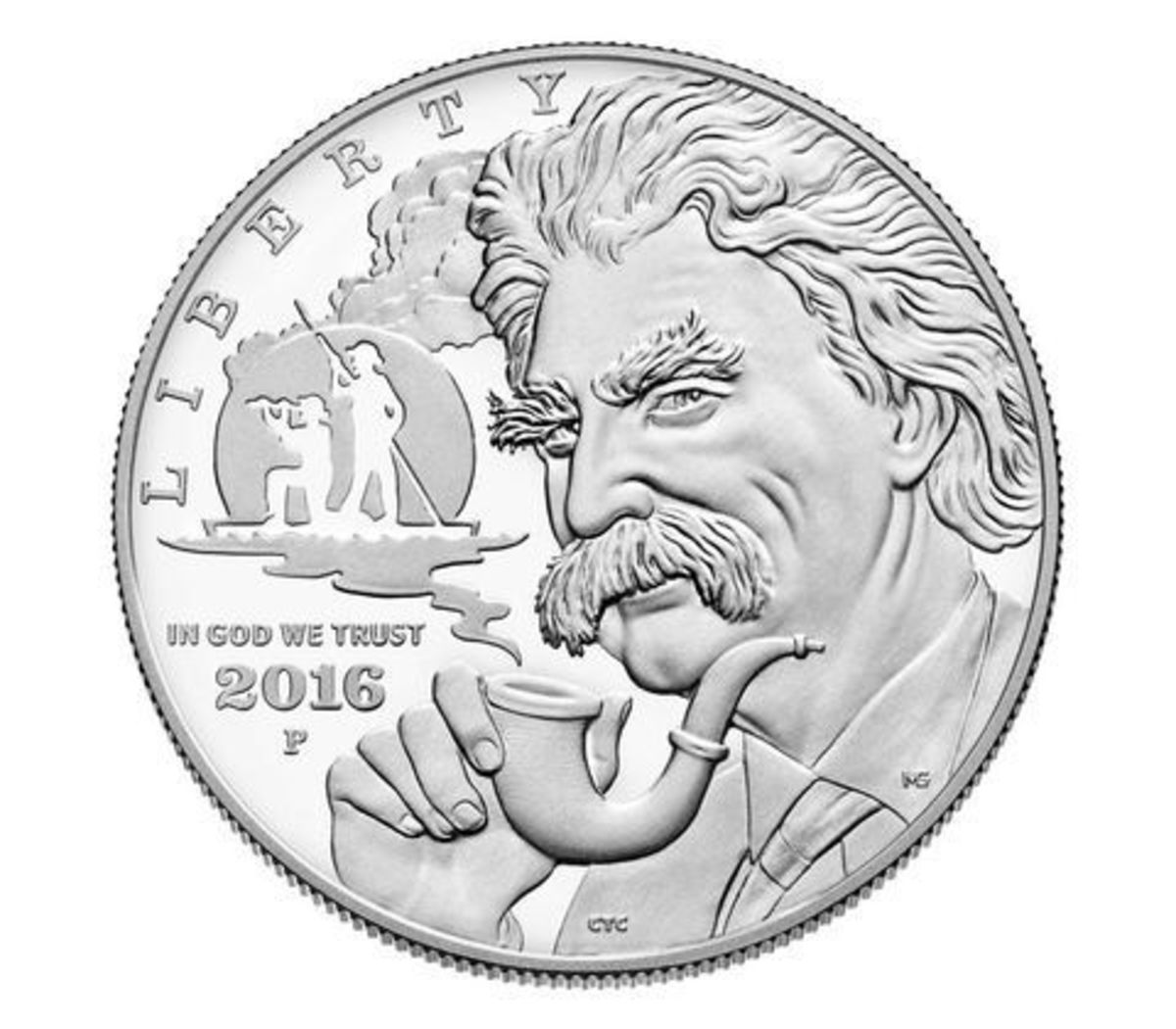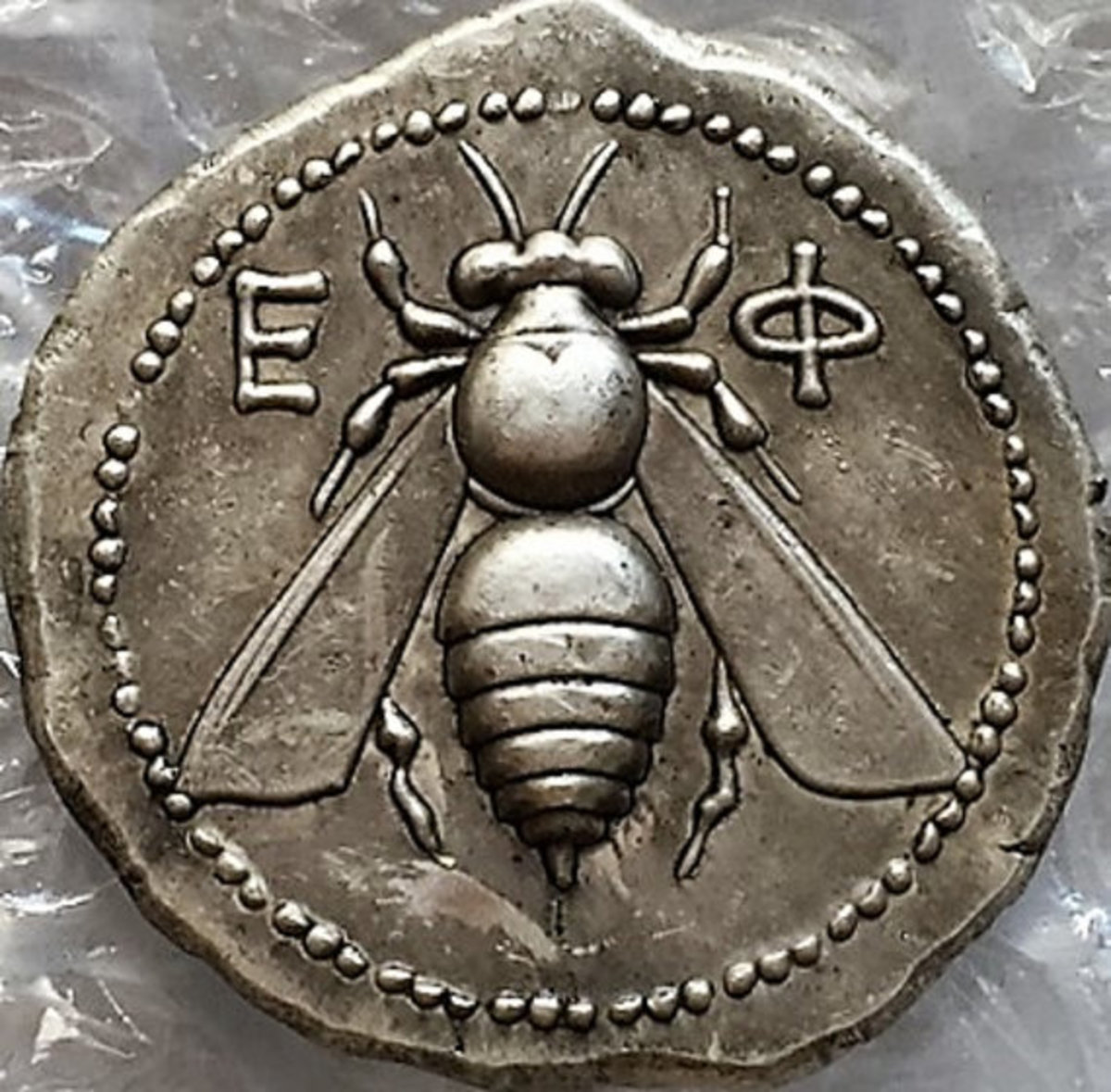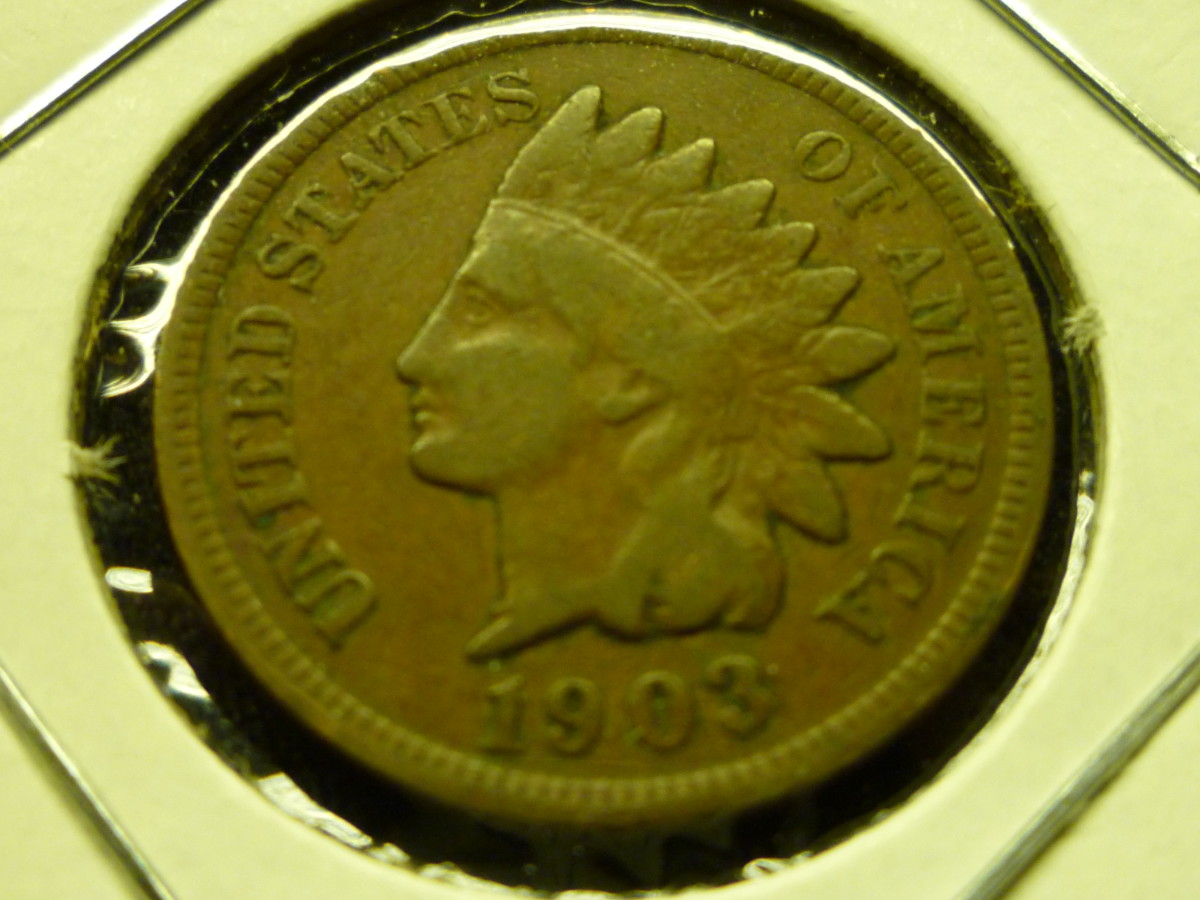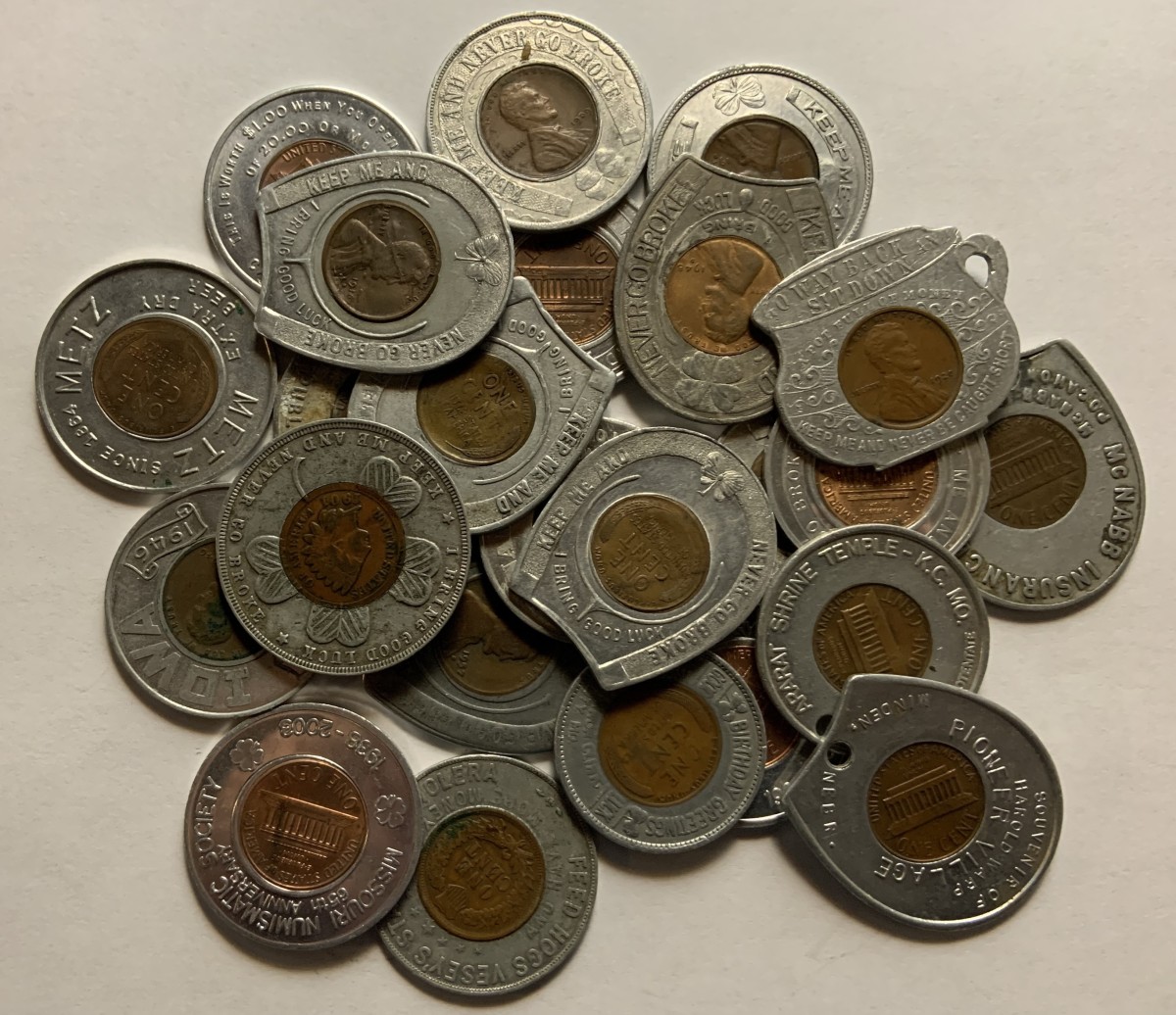Collecting US Silver Dollars for Fun and Profit
During the past 200 years, the United States has coined many different versions of silver dollars representing the artistry and beauty for the era. The silver dollar is no longer minted in the mint and has been replaced with a dollar that is slightly larger than a quarter. Yet, still beautiful, these modern day coins are absent of silver.
For this reason, the silver dollars retain a minimum value based on the silver content. But these coins usually have a collectible value that can reach into the thousands if not millions of dollars.
Flowing Hair Dollar (1794 – 1795)
The Flowing Hair Dollar has the unique distinction of being the first silver dollar produced in the United States of America. After the inception of the United States Mint two years prior, the Flowing Hair Dollar entered production that lasted for only two years itself. The Silver Dollars themselves are composed nearly entirely of pure silver, close to 90% silver, with the remaining 10% in copper.
Due to the short production period of the coin, the limited number and the age of the coins, the value varies widely based on condition, grade, and designation. In addition there were much fewer dollars minted in 1794 than 1795, helping to make the 1794 coins worth significantly more on average. Of the 2,000 coins originally produced, only 150 known coins remain to this day making them highly valued and collectible.
In 1795 they increased the production of the silver dollars, using a total of ten obverse dies and eleven reverse dies to mint the coins. Consequently of this there is a relative high variety of permutations present in the 1795 silver dollars, although only two main specifications based on distinctive variances on the reverse side are noticed today. The two leaf, and the three leaf Flowing Hair Dollars. The two leaf variety can be identified by a smaller wreathe on the reverse, and only two leaves above the head of the bald eagle. The three leaf instead has a larger wreathe, and three leaves above the head of the bald eagle.
Prices for the 1794 variety can range from $58,000 dollars, to as much as $2,700,000 dollars. The 1795 in turn can range from as little as $4,000 to as much as $675,000 dollars.
Draped Bust Dollar (1795 – 1804)
The Draped Bust Dollar was the second dollar designed
and minted in the United States from 1795 until 1804. The change was
primarily intended to bring the design on the obverse inline with all other
coins available from the United States at that time, unlike the previous
Flowing Hair Dollar which had a completely unique design. The
composition of the dollar was a ratio of 90% silver to 10% copper, the same as
the Flowing Hair Dollar.
For
the first three years that the coin was minted, the choice was made to use the
same reverse that appeared on the Flowing Hair Dollar, or often colloquially
referred to as the Small Eagle design. After 1798 however, the choice was
made to change the design to a heraldic insignia, one that was similar to the
Great Seal of the United States. The value for the Small Eagle design is
generally worth more than the Heraldic design, except for the exceptionally
rare 1804 variety.
The
final minting of the Draped Bust Dollars occurred in 1804, however all the
coins minted that year were given a date of 1803, creating no 1804 dollars
until 1834 when the United States wanted to make a very few high worth coins
for the King of Siam, and the Sultan of Muscat. In 1858 the United States
again decided to mint a few 1804 coins, bearing a different class II
designation from the previous ones. In total however only 15 coins are
either class are known to exist, and their value is extremely high.
The
price for the Small Eagle, Draped Bust Dollar can range from $1,200 dollars to
as much as $600,000 dollars. The price for the Heraldic Insignia, Draped
Bust Dollar can range from $900 dollars to $400,000 dollars. The price
for the 1804 Draped Bust Dollars range from $175,000 dollars to as high as
$7,500,000 dollars.
Seated Liberty Dollar (1840 – 1873)
After the minting of the Draped Bust Dollar was halted
in 1804 the decision was made to halt all production of silver dollars in the
United States. That decision was upheld until 1831 when it was finally
reversed, however it was not until 1836 that a very small amount of Gobrecht
Dollars were minted as a preliminary version of the Seated Liberty Dollar that
would enter full production in 1840. Once more like the preceding silver
dollars minted by the United States, they had a 90% to 10% silver, to copper
ratio.
The
obverse design of the Seated Liberty Dollar was changed to be the same as
commonly used by the other coins at the time except for the penny, although the
reverse had a unique Bald Eagle in a wreathe design, holding an olive branch in
its talons, and clutching the Union Shield to its breast. There are two
main variances of the Seated Liberty Dollar, from 1840 until 1866 the reverse
design had No Motto above the eagles head, from 1866 until 1873 a Motto was
added to the design of the coin above the eagles head within the wreathe.
The
Seated Liberty Dollar was commonly used from its inception until about 1853,
when the price of silver increased notably and many were melted to their base
components for the increased value. During this time much fewer coins
were minted and primarily used overseas in Asia until 1870 when the value of
silver lowered again, making the many of the coins minted between 1853 and 1870
worth considerably more than others. However the highest value Seated
Liberty Dollars known are the 1870-S series, only 12 of which are known to
exist today.
Minting
of the Seated Liberty Dollars took place at the Philadelphia Mint, Carson City
Mint, New Orleans Mint, and the San Francisco Mint. Of which the Carson
City (CC designation) and the New Orleans Mint (O designation) are generally
valued the highest.
The
value of the No Motto, Seated Liberty Dollar ranges from $235 dollars to
$150,000 dollars. The value of the Seated Liberty Dollar with Motto
ranges from $245 dollars to $150,000 dollars. The twelve 1870-S
series coins however range from $150,000 dollars to as much as $2,500,000
dollars.
Trade Dollar (1873 – 1885)
The creation of the Trade Dollar came about due to
other major powers in the west using large crown dollars in Asia, reducing the
value of the Morgan and Seated Liberty Dollars used previously. Minting
of the Trade Dollars took place at the Philadelphia mint, the Carson City mint,
and the San Francisco mint. The size of the dollar was increased from 412
grains to 420 grains, while maintaining the 90% to 10% silver to copper ratio
of previous silver dollars.
The
obverse design is similar to the Seated Liberty dollar, in which it depicts
Lady Liberty, seated facing the west and holding on olive branch in her
outstretched hand.
The
reverse of the coin is also similar to previous ones, depicting a bald eagle
clutching an olive branch and arrows within its talons, in addition to that
however there is engraved, 420 grains .900 fine. The latter depicts the
coins primary purpose in Asia to give an idea of the worth of the coin to
traders there.
Due
to the dollars use in Asia most specimens of the coin surviving today have a
chopmark cut into them, while for the most part reducing the value of the Trade
Dollars that bear them. There are however a select few chop marks that
are highly regarded and increase the value of the dollar in question
considerably.
After
five years spent being minted the decision was made to halt production of the
trade dollars, and from 1879 until 1885 only proofs were created of the dollar,
creating much smaller amounts than were previously created and are worth
considerably more than earlier years. About 6,500 total from 1879 until
1883, and only 15 created between 1884 -1885 which were unknown to the public
at large.
For
the 1873 – 1878 series the price ranges from $90 dollars, to $225,000 dollars.
The 1878 – 1881 series ranges from $1,850 dollars to $50,000 dollars.
The 1882 – 1885 series range from $1,850 dollars to as high as $2,520,000
dollars for one of the 5 coins produced in 1885.
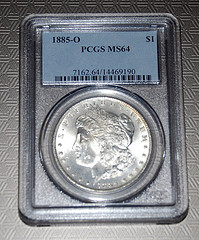
Morgan Dollar (1878 – 1921)
Silver dollars ceased being minted for five years in
the United States after the Seated Liberty Dollar ended minting. The
reason for the Morgan Dollars inception came about due to a major silver veins
discovery in Nevada and the rapid destabilization of the silver market, forcing
the decision to use the silver to mint new dollars for commercial use in the United
States.
The
Morgan Dollar was produced nearly continuously from 1878 until 1904, and again
for a short period in 1921. The obverse design of the Morgan Dollar is
Lady Liberty’s head facing west. On the obverse depicts a bald eagle
holding an olive branch and arrows, tightly gripped in its talons.
The
Morgan Dollars in particular are unique for having a wide variety of errors
made during their minting, some of which vastly increase or decrease silver
dollar value. Some Morgan Dollars minted for circulation have highly
frosted legends and reflective like surfaces, earning them the designation,
‘Deep Mirror Proof Like’. These particular dollars are usually worth a
very high premium compared to others. In addition, other errors include
the 1878-P 7/8 Tail Feathers, Morgan Dollar and the 1901-P Shifted Eagle double
reverse.
The
United States Treasury also maintains a fairly vast stockpile of Morgan Dollars
of specific years which have never entered circulation, these can usually be
purchased for as little as $30 dollars. The Morgan Dollar also has
specific years which are worth vastly more than other years usually, which
include the 1889-CC, 1893-S, and the 1895 proof of which only 20,000 were
minted.
The
value of the Morgan Dollars 1878 – 1884 series range from $21 dollars to
$200,000 dollars. The value of the 1885-1904 specimens range from $21
dollars to as high as $575,000 dollars for certain unique specimens.
Peace Dollar (1921 – 1935)
The Peace Dollar holds the unique distinction that it
is the last dollar coin minted in the United States to be composed of actual
silver. The initial plans behind the coin were for it to be a
commemorative coin to commemorate the end of World War I and not for general
circulation; however those plans were changed, and became the first dollar coin
to enter circulation since the end of the Morgan Dollar in 1904. The
composition of the coin is a ratio of 90% silver to 10% copper, and was the
last Silver Dollar minted in the United States until 1986, fifty one years
later. It should also be noted that the coin was only from 1921 through
1928, and then again from 1934 – 1935.
The
Peace Dollar was minted at the Philadelphia Mint, the Denver Mint, and the San
Francisco Mint. The design on the obverse is Lady Liberty’s head complete
with her crown, and on the reverse is engraved a proud Bald Eagle perched atop
a mountain and looking out eastward toward the horizon.
Peace
Dollars have a particularly wide range of values, with some particular types minted
as proof coins and unreleased for circulation of potentially extreme value.
In 1921 and 1922 there were made a number of proofs with high relief
engravings due to an error, which also dramatically increased the worth of
those particular dollars. The 1935-S dollars minted at the San Francisco
Mint had an error on the die used to strike the silver, adding a fourth ray
from the top of Lady Liberty’s head instead of the 3 rays on other Peace
Dollars makes it rather unique.
Values
for the 1921 – 1928 Peace Dollars range from $21 dollars to $60,000 dollars.
Values
for the 1934 – 1935 Peace Dollars range from $23 Dollars to $80,000 dollars.
Values for the 1921 High Relief Peace Dollars range from $52 dollars to
$52,500 dollars.
Values
for the 1922 High Relief Peace Dollars range from $65,000 dollars to as much as
$350,000 dollars.
Eisenhower Dollar (1971 – 1978)
The Eisenhower Dollar holds the unique distinction of
the first dollar coin minted by the United States that contains no precious
metals. In addition it was the last dollar coin to contain a proportionally
large amount of base metal to lesser denominations. This also led to its
relative unpopularity in general use among circulation because of its much
larger size, and heavier weight. The composition of the Eisenhower Dollar
is a core of pure copper, with a plating of 75% copper to 25% nickel.
The
Eisenhower Dollar was minted at the San Francisco Mint, the Denver Mint, and
the Philadelphia Mint. The design of the Eisenhower Dollar on the obverse
depicts Eisenhower’s head facing westward, his eyes open and defiant. On
the reverse is engraved the emblem of the Apollo 11 mission, a picture of a
Bald Eagle perched triumphantly on craggy rocks of the Moon with the majestic
image of the Earth just above the Bald Eagle’s head.
In
1975 and 1976, the United States celebrated the bicentennial of America’s
independence and released special versions of all their coins for these years.
The differences on the Eisenhower Dollar include the year 1776 – 1976,
and on the reverse of the coin had the Bald Eagle replaced by the Liberty Bell
on the surface of the moon, declaring the liberty of majesty of the United
States not only on Earth but into every frontier she ventures.
A
special collector’s mint of the Eisenhower Dollar was also released to the
public between 1971 and 1974. It contained a special 40% silver
composition plating and was not released for circulation.
Values
for the 1971 – 1978 Nickel clad Eisenhower Dollars range from $3 dollars to
$15,500 dollars. Values for the 1971 – 1974 Silver clad Eisenhower
Dollars range from $4 dollars to $12,000 dollars. Values for the
Bicentennial Nickel clad Eisenhower Dollars range from $3 dollars to $11,500
dollars. Values for the Bicentennial Silver clad Eisenhower Dollars range
from $4 dollars to $500 dollars.

